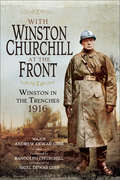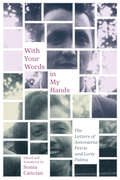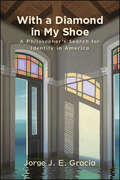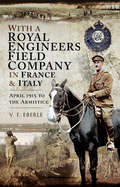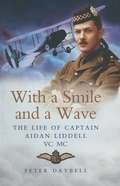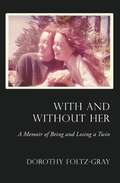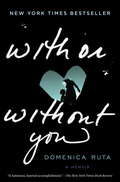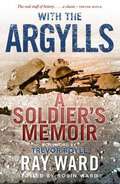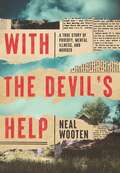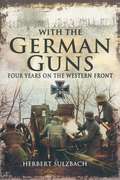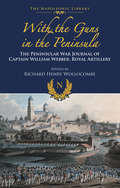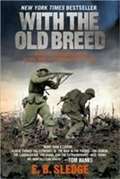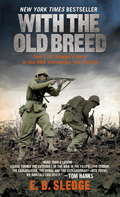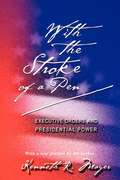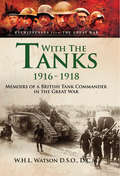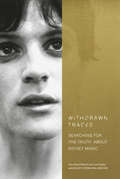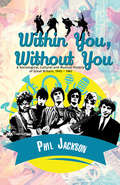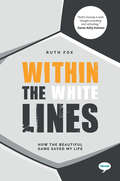- Table View
- List View
With William Burroughs: A Report from the Bunker
by Victor BockrisA trove of intimate conversations between Burroughs and Susan Sontag, Andy Warhol, Patti Smith, David Bowie, and more icons of &’70s New York and beyond. During the 1970s, William Burroughs, author of Junky and Naked Lunch, lived in a loft on the Bowery in New York City&’s Lower East Side. Christened &“The Bunker,&” his apartment became a modern-day literary salon with people like Andy Warhol, Lou Reed, Patti Smith, Susan Sontag, and fellow beat poet Allen Ginsberg passing through for a drink or a joint and the promise of stimulating conversation with the ingenious and eccentric Burroughs. Among Burroughs&’s entourage was author Victor Bockris, whose tape recorder was always running to capture meandering dinner party conversations and electric late-night sessions in the Bunker. In these moments, Bockris captures Burroughs&’s desires, anxieties, and thoughts on writing, photography, punk rock, and more. The recordings and recollections in With William Burroughs create an unprecedentedly multidimensional portrait of a man who is often overshadowed by his reputation.
With Wings: An Anthology of Literature by and about Women with Disabilities
by Florence Howe Marsha SaxtonWith Wings is an anthology of stories, poems, and essays by thirty women writers, all of whom have a disability or physical difference. The volume was compiled with several goals in mind: to combat educational discrimination, both sexist and ableist, against disabled women and girls; to enhance the self-esteem of disabled women and girls by presenting positive role models; to provide a literary forum for the experiences of disabled women of different social classes; and to challenge the literary community to follow suit, recognizing works by disabled women. The book is divided into three thematic parts: Living in These Bodies, These Minds; Seeking Help and Love; and Transcendence. Contributors include Nancy Mairs, Muriel Rukeyser, Alice Walker, Adrienne Rich, and many less well-known writers.
With Winston Churchill at the Front: Winston on the Western Front, 1916
by Andrew Dewar GibbFollowing his resignation from the Government after the disastrous Gallipoli campaign, Winston Churchills political career stalled. Never one to give in, Churchill was determined to continue fighting the enemy.He was already a Major in the Territorial Reserve and he was offered promotion to Lieutenant Colonel and with it command of a battalion on the Western Front. On 5 January 1916, Churchill took up his new post with the 6th (Service) Battalion, Royal Scots Fusiliers. The battalions adjutant was Captain Alexander Dewar Gibb who formed a close relationship with Churchill that lasted far beyond their few weeks together in the war.Dewar Gibb subsequently wrote an account of his and Churchills time together in the trenches. Packed with amusing anecdotes and fascinating detail, Gibbs story shows an entirely different side to Churchills character from the forceful public figure normally presented to the world. Churchill proved to be a caring and compassionate commander and utterly fearless. Despised on his arrival, by the time he departed he was adored by his men.Supplemented with many of Churchills letters, the observations of other officers and additional narrative this is the most unusual and absorbing account of this part of Churchill's life that has ever been told.
With Your Words in My Hands: The Letters of Antonietta Petris and Loris Palma (McGill-Queen's Studies in Ethnic History #2.50)
by Donna R. GabbaciaFollowing Antonietta and Loris's first kiss in the shadows of the Italian Alps barely a year after the end of the Second World War, the couple was divided by a distance far greater than could ever have been imagined. With Antonietta's family moving to Montreal, migration entered the couple's intimate worlds, stretching the distance between them from the two hundred kilometres separating Ampezzo and Venice to the ocean between Montreal and Venice. Throughout their transatlantic separation, the young lovers fervidly wrote each other until they were reunited in Canada in 1949.With Your Words in My Hands tells a story about love and migration as written and read, idealized and imagined, through daily correspondence. Sonia Cancian recovers a rare complete epistolary record of an immigrant experience defined by love and sustained in writing, translating the letters with deftness and an ear for the immediacy of emotion and longing they embody. Cancian gives context to these exchanges dating from the beginning of the largest migration movement from Italy to Canada, showing how love, frustration, fear, sadness, and empathy were palpable elements that inflected the quotidian – bureaucratic processes, employment, family life – and defined immigrant experience.For the countless couples whose love is fragmented by separation but woven together with envelopes and stamps, or onscreen in today's instant messaging, these letters remind us how the experience of distance and proximity, absence and presence, can be reconfigured within the world of intimate correspondence.
With a Diamond in My Shoe: A Philosopher's Search for Identity in America (SUNY series in Latin American and Iberian Thought and Culture)
by Jorge J. GraciaIn 1961, at the age of nineteen, Jorge J. E. Gracia escaped from the island of Cuba by passing himself off as a Catholic seminarian. He arrived in the United States with just a few spare belongings and his mother's diamond ring secured in a hole in one of his shoes. With a Diamond in My Shoe tells the story of Gracia's quest for identity—from his early years in Cuba and as a refugee in Miami to his formative role in institutionalizing the field of Latin American philosophy in the US academy. Committed to integrating into Anglo America without forgetting his roots, Gracia reflects on his struggles and successes as an immigrant and academic, bringing a philosopher's eye to bear on his personal and professional development as a leading Latinx scholar.
With a Royal Engineers Field Company in France & Italy: April 1915 to the Armistice
by V.F. EberleA memoir of the First World War from the rare perspective of an engineer.VF Eberle MC joined up upon the outbreak of the war in No 2 Field Company Royal Engineers, 48th (South Midland) Division, the same company as his brother, who was a captain. He was commissioned before sailing for France at the end of March 1915 and remained with it for the rest of the war. In that time he saw action on the Somme and in the Advance to the Hindenburg Line before his Division took part for most of the Battle of Third Ypres (Passchendaele). Transferred to Italy at the end of 1917, he took part in the final stages of the war, including the Battle of Asiago. Besides his eloquent description of the work of a field company RE, he spends some time in outlining his role in the development of the Bangalore Torpedo.Based on his wartime letters, diaries, and records—which can now be consulted in the Imperial War Museum—this book gives a detailed picture of the employment of a field company in war, during both periods of both relative tranquility and major offensives. There are relatively few memoirs of Royal Engineers’ officers, especially of those in his position, so close to the line. The memoirs benefit from his key eye for observation and his skillful use of the material available to him, making this a fine addition to the literature of the Great War.
With a Royal Engineers Field Company in France & Italy: April 1915 to the Armistice
by V.F. EberleA memoir of the First World War from the rare perspective of an engineer.VF Eberle MC joined up upon the outbreak of the war in No 2 Field Company Royal Engineers, 48th (South Midland) Division, the same company as his brother, who was a captain. He was commissioned before sailing for France at the end of March 1915 and remained with it for the rest of the war. In that time he saw action on the Somme and in the Advance to the Hindenburg Line before his Division took part for most of the Battle of Third Ypres (Passchendaele). Transferred to Italy at the end of 1917, he took part in the final stages of the war, including the Battle of Asiago. Besides his eloquent description of the work of a field company RE, he spends some time in outlining his role in the development of the Bangalore Torpedo.Based on his wartime letters, diaries, and records—which can now be consulted in the Imperial War Museum—this book gives a detailed picture of the employment of a field company in war, during both periods of both relative tranquility and major offensives. There are relatively few memoirs of Royal Engineers’ officers, especially of those in his position, so close to the line. The memoirs benefit from his key eye for observation and his skillful use of the material available to him, making this a fine addition to the literature of the Great War.
With a Smile and a Wave: The Life of Captain Aidan Liddell VC MC
by Peter DaybellDuring the late summer of 1915 Captain Aidan Liddell's gallant exploits filled many newspaper columns and he was feted as a national hero. Already decorated for bravery while serving with the Argyll and Sutherland Highlanders, he transferred to the Royal Flying Corps, and it was as a pilot that he attracted national acclaim.Badly wounded over enemy occupied Belgium, Liddell lost consciousness as his two-seater RE5 aircraft was raked by machine gun fire, and plunged out of control towards the ground. Despite terrible injuries and the extensive damage to his machine, he somehow recovered from an inverted dive and flew on for a further half an hour to the safety of the Allied lines, so saving his observer and a valuable aircraft.For this action he was awarded the Victoria Cross, but did not live to receive Britain's highest gallantry award and succumbed to his wounds a month later. With a Smile and a Wave provides a vivid picture of the squalor and danger of war, the backbreaking hardship of trench life and of the challenges of pioneer air fighting. It draws extensively on Captain Liddell's own letters and diaries and exposes the character and courage of the man in his own often compelling and moving words. But it is a story not just of war, but of growing up in a devout and prosperous family, of a Jesuit education at Stonyhurst College, and of Edwardian Oxford before the Great War. It portrays the privileged lifestyle of the English country gentleman, and describes how a very close knit and patriotic family dealt with the adversity of war.
With and Without Her
by Dorothy Foltz-GrayThis is a story that, when told directly, shuts people up, the kind of story that drives people to change the subject, or cross the street when they see the teller coming. In 1949, author Dorothy Foltz-Gray and her identical twin sister, Deane, were born. In 1981, Deane, then a psychologist, was fatally shot by one of her patients. In the years between, the pair formed an almost supernaturally close bond, one so intimate that at times, their memories fused and their individual identities dimmed.Here, Foltz-Gray, an award-winning poet and journalist, recounts not only the extraordinary phenomenon of growing up in a world that could not distinguish her from another human being, but also the struggle to survive the loss of her twin. Foltz-Gray describes the imagined womb life she and her sister shared, their childhood and family, and their dreams of sharing each other's lives. She also details the nightmare of her sister's death, its immediate aftermath, and her attempts to recover her self.With and Without Her is the story of what happens when a life divides into before and after. It is a story of identity and individuation, confusion and competition, intimacy and separation, violence and murder. Most of all, it is the story we all face, of loss and survival.
With or Without You: A Memoir
by Domenica RutaA haunting, unforgettable mother-daughter story for a new generation--the debut of a blazing new lyrical voice Domenica Ruta grew up in a working-class, unforgiving town north of Boston, in a trash-filled house on a dead-end road surrounded by a river and a salt marsh. Her mother, Kathi, a notorious local figure, was a drug addict and sometimes dealer whose life swung between welfare and riches, and whose highbrow taste was at odds with her hardscrabble life. And yet she managed, despite the chaos she created, to instill in her daughter a love of stories. Kathi frequently kept Domenica home from school to watch such classics as the Godfather movies and everything by Martin Scorsese and Woody Allen, telling her, "This is more important. I promise. You'll thank me later." And despite the fact that there was not a book to be found in her household, Domenica developed a love of reading, which helped her believe that she could transcend this life of undying grudges, self-inflicted misfortune, and the crooked moral code that Kathi and her cohorts lived by. With or Without You is the story of Domenica Ruta's unconventional coming of age--a darkly hilarious chronicle of a misfit '90s youth and the necessary and painful act of breaking away, and of overcoming her own addictions and demons in the process. In a brilliant stylistic feat, Ruta has written a powerful, inspiring, compulsively readable, and finally redemptive story about loving and leaving.
With the Argylls: A Soldier's Memoir
by Ray WardAn unforgettable memoir of fighting with the renowned Scottish infantry regiment during World War II. &“The real stuff of history . . . a classic.&” —Trevor Royle, author of Facing the Bear When Ray Ward died in 1999, his sons discovered an old and dusty manuscript in an Afrika Korps ammunition box in the cellar of the family home in Glasgow. These papers contained a collection of their father&’s memoirs, which detailed his experiences as an infantry officer during the Second World War, when he served in the 1st Battalion of the Argyll and Sutherland Highlanders. His memoirs give vivid accounts of Ray Ward&’s time in Eritrea, Abyssinia, Egypt, the Western Desert, Sicily and mainland Italy, and bring to life individual episodes of bravery, adventure and danger that characterized the North African and Italian Campaign.
With the Beatles
by Lewis LaphamHalfway between the summer of love and the Tet offensive, the Beatles went to India to study with the Maharishi--and Lewis Lapham, esteemed Harper's editor and award-winning writer, was there. WITH THE BEATLES is a remarkable book of cultural commentary on that seminal '60s moment.The ashram in Rishikesh, India was the ultimate '60s scene: the Beatles, Donovan, Mia Farrow, a stray Beach Boy and other '60s icons gathered along the shores of the Ganges--amidst paisley and incense and flowers and guitars--to meditate at the feet of the Maharishi Mahesh Yogi. The February 1968 gathering received such frenzied, world-wide attention that it is still considered a significant, early encounter between Western pop culture and the mystical East. And Lewis Lapham was the only journalist allowed inside.And what went on inside the compound has long been the subject of wild speculation and rampant rumor. The Beatles said they wrote some of their greatest songs there . . . and yet they also came away bitterly disillusioned. In WITH THE BEATLES, Lewis Lapham finally tells the whole story.
With the Devil's Help: A True Story of Poverty, Mental Illness, and Murder
by Neal WootenIn the tradition of The Glass Castle, Educated, and Heartland, Neal Wootentraces five decades of his dirt-poor, Alabama mountain family as the years and secrets coalesce.Neal Wooten grew up in a tiny community atop Sand Mountain, Alabama, where everyone was white and everyone was poor. Prohibition was still embraced. If you wanted alcohol, you had to drive to Georgia or ask the bootlegger sitting next to you in church. Tent revivals, snake handlers, and sacred harp music were the norm, and everyone was welcome as long as you weren&’t Black, brown, gay, atheist, Muslim, a damn Yankee, or a Tennessee Vol fan. The Wooten's lived a secret existence in a shack in the woods with no running water, no insulation, and almost no electricity. Even the school bus and mail carrier wouldn&’t go there. Neal&’s family could hide where they were, but not what they were. They were poor white trash. Cops could see it. Teachers could see it. Everyone could see it. Growing up, Neal was weaned on folklore legends of his grandfather—his quick wit, quick feet, and quick temper. He discovers how this volatile disposition led to a murder, a conviction, and ultimately to a daring prison escape and a closely guarded family secret. Being followed by a black car with men in black suits was as normal to Neal as using an outhouse, carrying drinking water from a stream, and doing homework by the light of a kerosene lamp. And Neal&’s father, having inherited the very same traits of his father, made sure the frigid mountain winters weren&’t the most brutal thing his family faced. Told from two perspectives, this story alternates between Neal&’s life and his grandfather&’s, culminating in a shocking revelation. Take a journey to the Deep South and learn what it&’s like to be born on the wrong side of the tracks, the wrong side of the law, and the wrong side of a violent mental illness.
With the German Guns: Four Years on the Western Front (Pen And Sword Military Classics Ser.)
by Herbert Sulzbach&“An invaluable eye-witness account of life at the lower levels of the German Army during the First World War.&”—HistoryOfWar.org At once harrowing and lighthearted, Herbert Sulzbach&’s exceptional diary has been highly praised since its original publication in Germany in 1935. With the reprint of this classic account of trench warfare, it records the pride and exhilaration of what to him was the fight for a just cause. It is one of the very few available records of an ordinary German soldier during the First World War. &“One of the most notable books on the Great War. It is a book which finely expressed the true soldierly spirit on its highest level; the combination of a high sense of duty, courage, fairness and chivalry.&”—Sir Basil Liddell Hart &“Herbert Sulzbach&’s first person diary focuses on four years of trench warfare and is a valuable contribution to the overall individual story of the First World War, more so than many other such accounts perhaps, as the author was German.&”—OCAD Militaria Collectors Resources &“A first-class personal account of Herbert Sulzbach&’s war seen through his diaries. There is much insight into both his and the German soldier&’s attitude to war and events . . . a very readable narrative and adds to the library of sources that are invaluable to counter the legions of postmodern re-evaluations of the German soldier.&”—Battlefield Guide
With the Guns in the Peninsula: The Peninsular War Journal of Captain William Webber, Royal Artillery (The Napoleonic Library #No. 18)
by William WebberThis British artillery officer&’s journal vividly depicts life on the frontlines in the war against Napoleon in Spain and Portugal. In August 1812, Second Captain Webber of the Royal Artillery joined Captain Maxwell&’s 9-pounder Brigade at Zafra, Spain. His journal offers a detailed chronicle of the period up June 16th 1813, just before the Battle of Vitoria. Webber records events as they unfold, as well as his impressions of the countryside and its people and customs. Webber describes his experiences during the advance up to and along the Tagus to Aranjuez, the reversal of fortunes during the autumn of 1812, the difficult retreat into winter quarters in Portugal, and finally his brigade&’s part in the brilliant campaign of 1813 which saw the French pushed back across the Ebro. Webber gives vivid accounts of engagements with the enemy along the way; notably around Alba de Tormes during the retreat, and on the heights outside Burgos. The preface by Lieutenant Colonel Laws sets the journal within the context of the Peninsular War. It also outlines Webber&’s military career, which culminated with his wounding at Waterloo.
With the Jocks: A Soldier's Struggle for Europe 1944-45
by Peter White'The book is remarkable .... one of the most striking personal records of the period.' - Max HastingsAs a 24-year-old lieutenant in the King's Own Scottish Borderers, Peter kept an unauthorised journal of his regiment's advance through the Low Countries and into Germany in the closing months of the war in Europe. Forbidden by his commanding officer from doing so for security reasons, Peter's boyhood habit of diary keeping had become an obsession too strong to shake off. In this graphic evocation of a soldier at war, the images he records are not for the faint hearted.There are heroes aplenty within its pages, but there are also disturbing insights into the darker sides of humanity - the men who broke under the strain and who ran away; the binge drinking which occasionally rendered the whole platoon unable to fight; the looting, the rape, and the callous disregard for human life that happens when death is a daily companion. Hidden away for more than 50 years, this is a rare opportunity to read an authentic account of the horrors of war experienced by a British soldier in the greatest conflict of the 20th century.
With the Old Breed: At Peleliu and Okinawa
by E. B. SledgeA reprint of the classic World War II memoir chronicling 20-year-old Sledge's experiences as a rifleman. The non-fiction account of the Peleliu and Okinawa battles has been compared to All Quiet on the Western Front. It certainly captures the confusion and fear of war, particularly for a young man torn between ideals of duty and the horrific devastation of combat. Annotation c. by Book News, Inc., Portland, OR.
With the Old Breed: At Peleliu and Okinawa
by E. B. SledgeIn The Wall Street Journal, Victor Davis Hanson named With the Old Breed one of the top five books on epic twentieth-century battles. Studs Terkel interviewed the author for his definitive oral history, The Good War. Now E. B. Sledge's acclaimed first-person account of fighting at Peleliu and Okinawa returns to thrill, edify, and inspire a new generation.An Alabama boy steeped in American history and enamored of such heroes as George Washington and Daniel Boone, Eugene B. Sledge became part of the war's famous 1st Marine Division-3d Battalion, 5th Marines. Even after intense training, he was shocked to be thrown into the battle of Peleliu, where "the world was a nightmare of flashes, explosions, and snapping bullets." By the time Sledge hit the hell of Okinawa, he was a combat vet, still filled with fear but no longer with panic.Based on notes Sledge secretly kept in a copy of the New Testament, With the Old Breed captures with utter simplicity and searing honesty the experience of a soldier in the fierce Pacific Theater. Here is what saved, threatened, and changed his life. Here, too, is the story of how he learned to hate and kill-and came to love-his fellow man.From the Trade Paperback edition.
With the Stroke of a Pen: Executive Orders and Presidential Power
by Kenneth R. MayerThe conventional wisdom holds that the president of the United States is weak, hobbled by the separation of powers and the short reach of his formal legal authority. In this first-ever in-depth study of executive orders, Kenneth Mayer deals a strong blow to this view. Taking civil rights and foreign policy as examples, he shows how presidents have used a key tool of executive power to wield their inherent legal authority and pursue policy without congressional interference. Throughout the nation's life, executive orders have allowed presidents to make momentous, unilateral policy choices: creating and abolishing executive branch agencies, reorganizing administrative and regulatory processes, handling emergencies, and determining how legislation is implemented. From the Louisiana Purchase to the Emancipation Proclamation, from Franklin Roosevelt's establishment of the Executive Office of the President to Bill Clinton's authorization of loan guarantees for Mexico, from Harry Truman's integration of the armed forces to Ronald Reagan's seizures of regulatory control, American presidents have used executive orders (or their equivalents) to legislate in ways that extend far beyond administrative activity. By analyzing the pattern of presidents' use of executive orders and the relationship of those orders to the presidency as an institution, Mayer describes an office much more powerful and active than the one depicted in the bulk of the political science literature. This distinguished work of scholarship shows that the U.S. presidency has a great deal more than the oft-cited "power to persuade."
With the Tanks, 1916–1918: Memoirs of a British Tank Commander in the Great War (Eyewitnesses from The Great War)
by W.H.L. WatsonWilliam Watson was a young Oxford post-graduate at the outbreak of the First World War in 1914. Along with several friends from Oxford he enlisted in the army expecting the war to last six weeks. Watson began his service in the Great War as a British Army motorcycle despatch rider. He saw active service during the key battles of 1914 and early 1915. Watson was then commissioned and became a tank commander and saw active service with the tanks most notably at Cambrai in 1917. This well written and evocative memoir was originally published under the tile 'A Company Of Tanks' it constitutes a wonderful primary source and is an invaluable addition to the library of anyone with an interest in the evolution of the tank as a decisive weapon on the battlefield. Highly detailed, but nonetheless accessible this superb new illustrated edition, edited by Emmy AwardTM winning historian Bob Carruthers is greatly recommended for serious enthusiasts and casual readers alike.
Withdrawn Traces: Searching for the Truth about Richey Manic, Foreword by Rachel Edwards
by Sara Hawys Roberts Leon NoakesNew discoveries and a fresh perspective, with unprecedented access to Richey's personal archiveOn 1 February 1995, Richey Edwards, guitarist of the Manic Street Preachers, went missing at the age of 27. On the eve of a promotional trip to America, he vanished from his London hotel room, his car later discovered near the Severn Bridge, a notorious suicide spot.Over two decades later, Richey’s disappearance remains one of the most moving, mysterious and unresolved episodes in recent pop culture history. For those with a basic grasp of the facts, Richey's suicide seems obvious and undeniable. However, a closer investigation of his actions in the weeks and months before his disappearance just don’t add up, and until now few have dared to ask the important questions.Withdrawn Traces is the first book written with the co-operation of the Edwards family, testimony from Richey’s closest friends and unprecedented and exclusive access to Richey’s personal archive. In a compelling real-time narrative, the authors examine fresh evidence, uncover overlooked details, profile Richey's state of mind, and brings us closer than ever before to the truth.
Within Arm's Length: A Secret Service Agent's Definitive Inside Account of Protecting the President
by Dan EmmettA “very moving” inside look at the Secret Service from an agent for George H.W. Bush, Bill Clinton, and George W. Bush (Jake Tapper, CNN correspondent and New York Times–bestselling author of The Outpost).Dan Emmett was just eight years old when President John F. Kennedy was assassinated, an event that shaped the course of young Emmett's life as he set a goal of becoming a US Secret Service agent.Within Arm's Length is a revealing inside look at the Secret Service and the elite Presidential Protective Division (PPD). With stories from some of the author's more high-profile assignments in his twenty-one years of service, Dan Emmett describes the professional, physical and emotional challenges faced by Secret Service agents.Included are never before discussed topics such as the complicated relationship between presidents, first ladies and their agents, the inner workings of Secret Service protective operations as well as the seldom-mentioned challenges of the complex Secret Service cultural issues faced by an agent's family. Within Arm's Length also shares firsthand details about conducting presidential advances, dealing with the media, driving the President in a bullet-proof limousine, running alongside him through the streets of Washington, and flying with him on Air Force One.An essential book on the United States Secret Service, Within Arms Length gives the reader an unprecedented look into the life and career of an agent in America's most elite law enforcement agency.“A must-read for anyone anticipating a job in government security services or police administration.” —Abraham Bolden, first African American Secret Service agent assigned to the PPD“Fascinating.” —Shannon Bream, FOX News“Succeeds in making vivid the life and culture of the anonymous . . . men and women clustered around the president.” —Library Journal
Within These Walls: Memoirs of a Death House Chaplain
by Carlton Stowers Carroll PickettWithin These Walls is the powerful memoir of Rev. Carroll Pickett, who spent fifteen years as the death house chaplain at "The Walls," the Huntsville unit of the Texas prison system. In that capacity Reverend Pickett ministered to ninety-five men before they were put to death by lethal injection. They came with sinister nicknames like "The Candy Man" and "The Good Samaritan Killer," some contrite, some angry--a few who might even have been innocent. All of them found in Reverend Pickett their last chance for an unbiased confessor who would look at them only as fellow humans, not simply as the convicted criminals the rest of society had already dismissed them as. This firsthand experience gave Reverend Pickett the unique insight needed to write an impassioned statement on the realities of capital punishment in America. The result is a thought-provoking and compelling book that takes the reader inside the criminal mind, inside the execution chamber, and inside the heart of a remarkable man who shares his thoughts and observations not only about capital punishment, but about the dark world of prison society.
Within You, Without You: A Sociological, Cultural and Musical History of Great Britain, 1945 – 1967
by Phil JacksonPhil Jackson has had a lifelong passion for music and in his book Within You, Without You examines the post-war years to the year of the ‘summer of love’, 1967, from the perspective of a listener, a writer and collector, drawing on a variety of sources and his own personal experiences to provide an extensive, analytical and engaging account of a seminal period in the history of popular culture and music.His book is unique in examining the mystery and magic of the music that emerged in the ’60s within its historical context with particular reference to the impact and influence of The Beatles whose ‘Sergeant Pepper’s Lonely Hearts Club Band’ was a ‘high water mark’ in the development of pop and rock music and culture.A multiplicity of musical artists across various genres are discussed in a multi-faceted approach that includes a comprehensive reference guide with recommendations for fans, collectors and newcomers alike.
Within the White Lines: How the Beautiful Game Saved My Life (Inspirational Series)
by Ruth FoxGrowing up, Ruth was on track for an ideal life – she had the grades, friends, great sporting potential, and a strong bond with her sister. However, when she was 14, her perfect life began to crack. After suffering an injury, Ruth began seeking control in other areas of her life to combat growing feelings of depression. Having recovered physically, but not mentally, she eventually quit the game she loved so much.Having been let down repeatedly by the authorities – including during a stay in a mental health hospital – she sought support and understanding from authority figures and role models. And as she battled through the next few years, Ruth rediscovered football as a way to keep grounded during the most chaotic times in her life.Now an active campaigner for mental health awareness and training, especially in sport, Ruth is a proud ambassador and advisor for The Shaw Mind Foundation and Mental Health Football Association.


